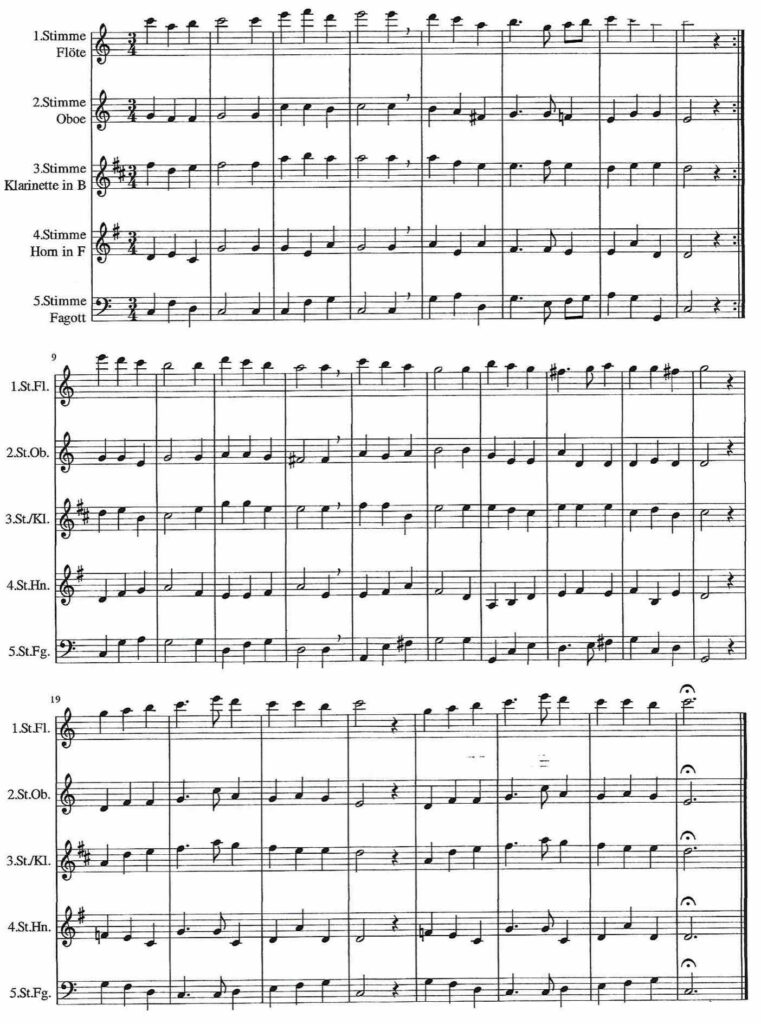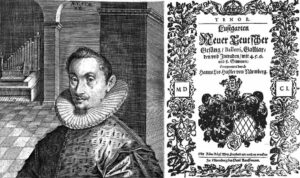Hans Leo Haßler (1564-1612) Tanzen und Springen / Dancing and Jumping

Geboren in Nürnberg, gestorben in Frankfurt am Main, wird der Komponist, Organist und Uhrmacher H. L. Haßler als wichtigster Komponist seiner Zeit genannt, „Musicus inter Germanos sua aetate summus“. Haßlers Werk steht an der Stilwende von der späten Renaissance-Polyphonie zu venezianisch-frühbarocker Klangentfaltung, sowie in seinen Liedsätzen zu schlichter, liedhafter Homophonie. Hassler war ein Tausendsassa und schrieb geistlich und weltlich, simpel und kompliziert, ja sogar katholisch und evangelisch. Auf der einen Seite das Madrigal „Tanzen und Springen” (aus „Lustgarten neuer teutscher Gesäng, Balletti, Gaillarden und Intraden“), komponiert um 1600, ist es längst zu einem Volkslied geworden. Auf der anderen Seite: Motetten und Intraden – kunstvoll und erhaben. Der Gegensatz zum “Ohrwurm” des Tanzliedes könnte größer nicht sein.

Born in Nuremberg, died in Frankfurt am Main, the composer, organist and clockmaker H. L. Haßler is named as the most important composer of his time, “Musicus inter Germanos sua aetate summus”. Venetian-early Baroque sound development, as well as in his song settings to simple, song-like homophony. Hassler was a jack of all trades and wrote spiritual and secular, simple and complicated, even Catholic and Protestant. On the one hand the madrigal “Dancing and Jumping” (from “Lustgarten new German song, ballet, gaillards and intrados”), composed around 1600, it has long since become a folk song. On the other hand: motets and intradas – artful and sublime. The contrast to the “catchy tune” of the dance song could not be greater be.
| sound sample / Tonbeispiel | score/parts PDF download: € 12,- | add to cart / in den Warenkorb |
